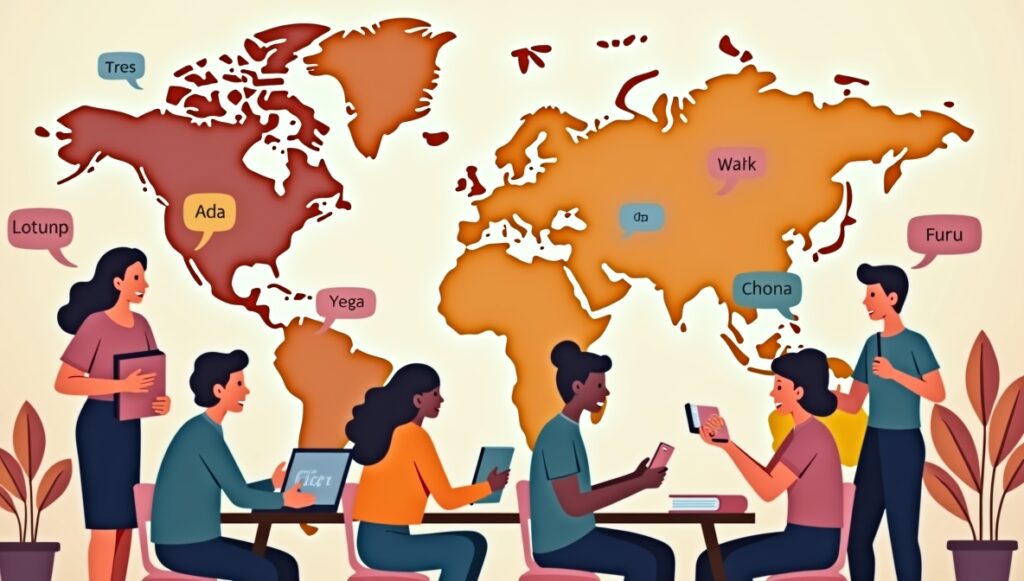
Learn new language it’s challenging or not ?
Hey! So, you’re thinking about learning a new language? That’s awesome! It might feel a little overwhelming at first, but trust me, it’s totally doable. The key is to have the right approach and stay consistent.
First, make it fun! Listen to music, watch movies, or even follow social media accounts in your target language. The more you expose yourself to it, the faster you’ll pick it up.
Second, don’t stress about making mistakes. Seriously, no one expects you to be perfect right away. Just start speaking, even if it’s just a few words. The more you practice, the better you’ll get.
And lastly, find a way to use it every day. Even 10 minutes of practice can make a huge difference. Try apps, join language groups, or chat with native speakers.
First and foremost, it’s important to take the right approach and identify the steps that will genuinely help in learning a new language. Let’s dive into these steps in detail
Table of Contents
ToggleStep 1 - Set Clear Goals To learn new language
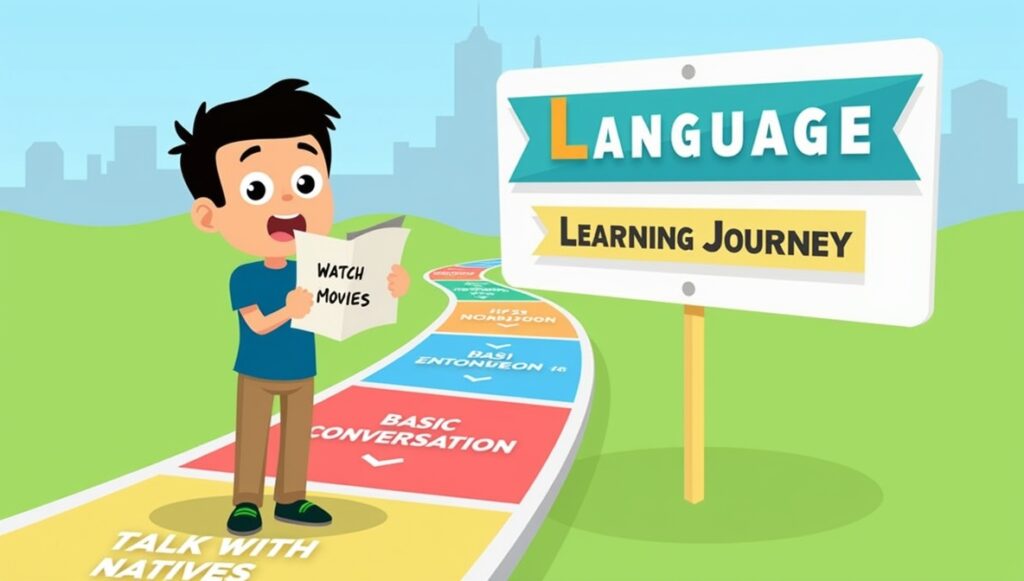
- Being able to have simple conversations within three months.
- Passing a language test to prove your skills.
- Understanding movies, TV shows, or books in the language.
- Talking with native speakers for work, travel, or fun.
Step 2 - Choose the Right Language Learning Resources
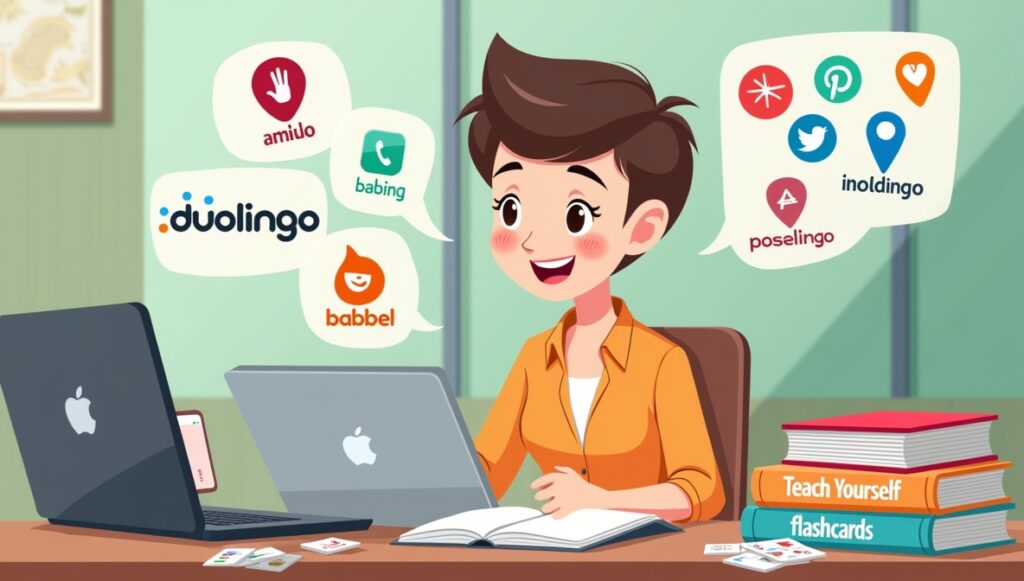
Online Courses & Apps
Hey, so when it comes to learning a new language, there are tons of tools out there. The trick is to mix and match a few different ones so you get a bit of everything. Here are some popular options:
Imagine you want to learn Spanish. Here’s how you could use these resources together
- Duolingo: You start with Duolingo because it’s fun and easy. Every day, you spend 10-15 minutes playing little games that teach you basic words and grammar, like “hola” (hello) or “cómo estás?” (how are you?). It’s like a warm-up for your brain.
- Babbel: After a week or two, you add Babbel to your routine. It gives you more structured lessons, like teaching you how to introduce yourself or order food at a restaurant. It builds on what you learned in Duolingo, so you feel like you’re making progress.
- Pimsleur: Now, you want to practice speaking and listening. So, you download Pimsleur and listen to audio lessons while you’re driving or walking. It’s like having a teacher in your ear, helping you say things like “¿Dónde está el baño?” (Where is the bathroom?) with the right pronunciation.
- Memrise: You notice you’re forgetting some words, so you use Memrise to help you remember them. It reminds you to review words like “gracias” (thank you) or “por favor” (please) at just the right time, so they stick in your brain.
- Rosetta Stone: Finally, you try Rosetta Stone to get a more immersive experience. It shows you pictures and asks you to match them with words or phrases. For example, you see a picture of a dog and learn “el perro” (the dog). It helps you think in Spanish instead of translating in your head
When you use these tools together, you’re not just memorizing words—you’re actually practicing how to speak, listen, and even think in Spanish. And here’s the best part: you can pick and choose what works best for you! For example, if you love playing games, you can spend more time on Duolingo. If you really want to get better at speaking, you can focus on Pimsleur. It’s all about finding the mix that feels right for you and keeps you excited to learn!
Textbooks & Grammar Guides
- Look for beginner-friendly books like “Teach Yourself” or “Assimil” series.
- Grammar-focused books can provide deep insights into sentence structure
Textbooks and grammar guides are like your helpful roadmaps for learning a language. If you’re just starting out, beginner-friendly books like the “Teach Yourself” or “Assimil” series are perfect. They take you step by step, teaching you basic words and phrases first, then slowly moving to more complicated stuff. They’re like a patient teacher who explains everything clearly.
If you want to really understand how the language works, grammar books are super useful. They explain things like how to build sentences, use the right verb forms, and put words in the correct order. For example, in Spanish, they’ll tell you why you say “Yo como” (I eat) and not “Yo como yo”. It’s like learning the “rules” of the language so you can speak and write correctly.
The best part is, you can use these books together with apps or speaking practice. Sure, they might not be as fun as playing games, but they help you build a solid base for your language skills. And whenever you’re stuck or forget something, you can always flip through the book to find the answer—it’s like having a reliable backup whenever you need it!
The best part is, you can use these books together with apps or speaking practice. Sure, they might not be as fun as playing games, but they help you build a solid base for your language skills. And whenever you’re stuck or forget something, you can always flip through the book to find the answer—it’s like having a reliable backup whenever you need it!
Online Tutors & Language Exchange
- Platforms like iTalki, Preply, or Tandem allow you to practice with native speakers.
- Language exchange programs help you learn from someone who wants to learn your native languag.
If you want to practice speaking with real people, online tutors and language exchange platforms are amazing tools. Websites and apps like iTalki, Preply, or Tandem let you connect with native speakers of the language you’re learning. For example, if you’re learning Spanish, you can find a tutor from Spain or Mexico who will teach you one-on-one. They’ll help you with pronunciation, conversation, and even cultural tips. It’s like having a personal coach who’s there just for you!
Another great option is language exchange programs. These are a bit different because they’re more like a two-way street. You find someone who speaks the language you want to learn (like Spanish) and who also wants to learn your native language (like English). You spend half the time practicing Spanish with them, and the other half helping them with English. It’s a win-win! You both get to learn from each other, and it’s often free or very affordable.
The best part about these options is that they give you real-life practice. Instead of just learning from books or apps, you’re actually talking to people, which helps you get comfortable using the language in conversations. Plus, it’s a great way to make new friends from around the world
Podcasts & Videos
- Watch YouTube channels dedicated to language learning.
- Listen to podcasts like “Coffee Break Languages” or “Language Transfer.”
If you like watching videos, YouTube is full of channels that focus on teaching languages. These channels use pictures, examples, and real-life situations to make learning easier and more fun. For example, you might find a channel that teaches Spanish by showing you how to order food at a restaurant or how to say hello and introduce yourself. It’s like being in a fun, interactive class where you can pause, rewind, and watch again whenever you need to. It’s a simple and flexible way to learn!
Podcasts and videos are great for learning a language because you can listen or watch while doing everyday things, like traveling, cooking, or just relaxing. For example, podcasts like “Coffee Break Languages” or “Language Transfer” are made to teach you a language in short, simple lessons. They take you through the language bit by bit, teaching you common phrases, grammar, and how to pronounce words correctly. It’s like having a friendly teacher right there with you, helping you learn step by step!
The best part about podcasts and videos is that they make learning feel natural and enjoyable. You can listen or watch whenever it’s convenient for you, and they often cover topics that are practical and useful for real-life situations. Plus, they’re usually free, so you can try out different ones to see which style works best for you!
Step 3: Immerse Yourself in the Language
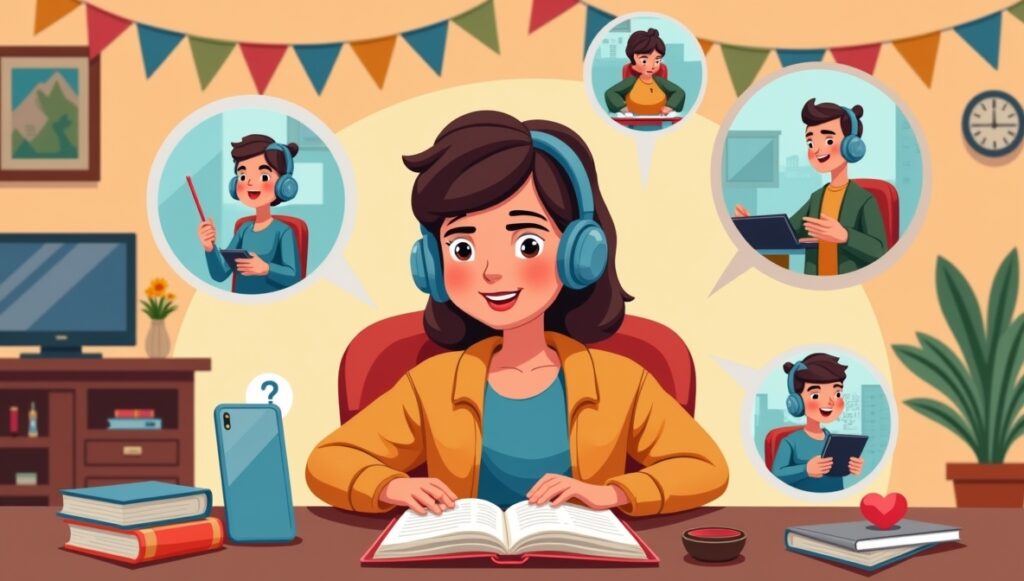
Immersion is one of the best ways to learn a new language because it helps you get comfortable with how the language sounds and how people actually use it in everyday life. Even if you can’t visit a country where the language is spoken, you can still bring the language into your daily routine. There are lots of simple ways to surround yourself with the language and make it a natural part of your day!
Read books, articles, or social media posts in the new language. Start with simple children’s books or short articles, and gradually move to more complex material. This helps you learn how sentences are structured and expands your vocabulary.
Listen to music in the language and try to understand the lyrics. Look up the words and sing along if you can! It’s a fun way to learn new vocabulary and improve your listening skills.
Change the language settings on your phone, computer, and apps to the language you’re learning. This way, you’ll see and use the language every day, even in small ways.
Watch movies and TV shows in the language you’re learning. Start with subtitles in your native language, then switch to subtitles in the target language, and finally try watching without any subtitles. This helps you get used to the sounds, rhythms, and expressions of the language.
Step 4: Practice Speaking Every Day
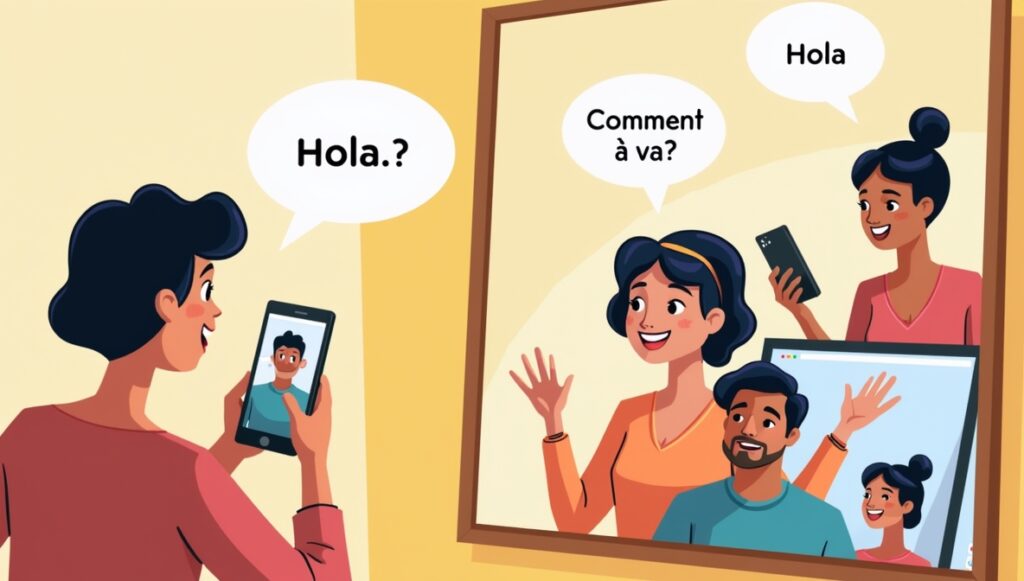
- Speak out loud every day, even if you’re just talking to yourself. Practice saying simple phrases, describing your day, or even narrating what you’re doing (like “I’m making coffee” or “I’m going to the store”). This helps you get comfortable forming sentences and using the language.
- Use apps that focus on speaking. Some language apps have exercises where you repeat words or sentences, and they give you feedback on your pronunciation. It’s like having a mini-coach to help you sound more natural.
- Join online communities or local meetups. Look for groups where people are learning the same language or native speakers who want to practice with learners. This gives you a chance to have real conversations and learn how people actually talk in everyday life.
- Record yourself speaking. Try reading a short text or having a conversation, then listen to the recording. Compare it to how native speakers sound. This helps you notice where you can improve, like your pronunciation or rhythm.
- The key is to practice speaking regularly, even if it feels awkward at first. The more you speak, the more confident and fluent you’ll become
Sure! Here’s a simplified and slightly more detailed version of the steps for learning a language effectively:
Step 5: Learn Vocabulary Effectively
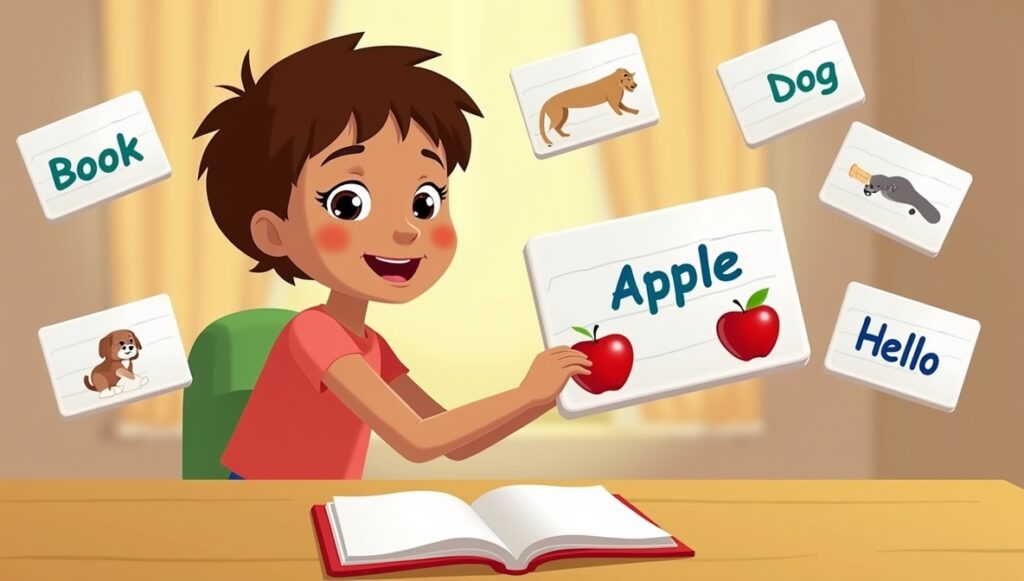
Vocabulary is like the building blocks of a language. Without words, you can’t express yourself. Here’s how to learn new words effectively:
- Use Flashcards: Apps like Anki or Quizlet are great because they use spaced repetition. This means they show you words at the right time to help you remember them better.
- Learn Phrases, Not Just Words: Instead of memorizing single words, learn common phrases or sentences. For example, instead of just learning “apple,” learn “I ate an apple.” This helps you understand how words are used in real life.
- Connect Words to Images or Stories: Our brains remember things better when they’re linked to pictures or stories. For example, if you’re learning the word “dog,” imagine a cute dog playing in a park.
- Keep a Language Journal: Write down new words you learn every day. Review them regularly to make sure they stick in your memory.
Step 6: Understand Grammar and Sentence Structure

Grammar is like the glue that holds words together. Without it, sentences won’t make sense. Here’s how to tackle grammar:
- Start Simple: Begin with basic sentences like “I am happy” or “She eats food.” Once you’re comfortable, move on to more complex sentences.
- Focus on Verbs: Verbs are super important in most languages. Learn how they change (conjugate) based on who’s doing the action (e.g., “I eat” vs. “She eats”).
- Practice Translating: Try translating simple sentences from your native language to the target language and vice versa. This helps you understand how sentences are structured differently.
Step 7: Develop Listening Comprehension Skills
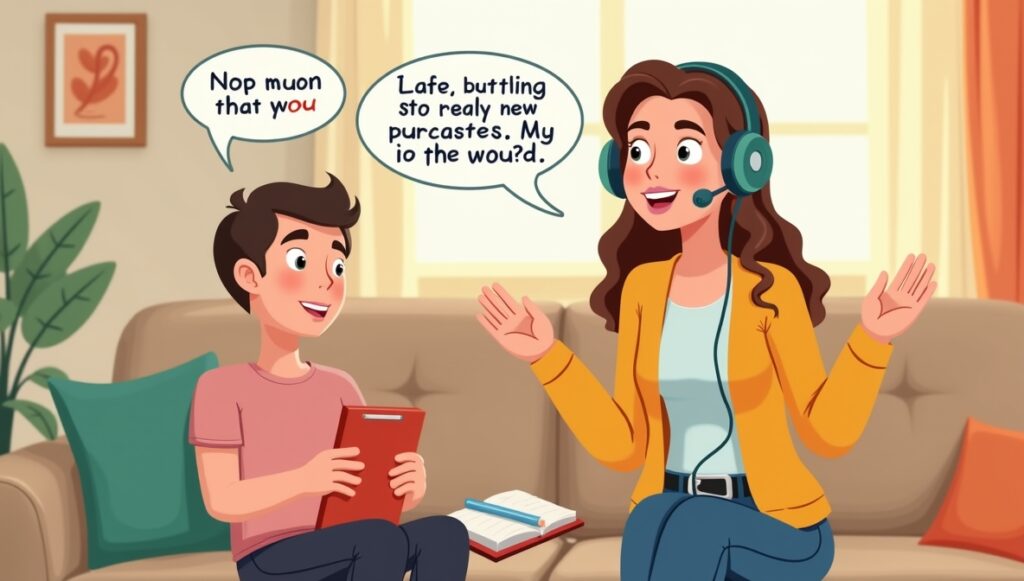
Understanding native speakers can be tough at first, but it gets easier with practice. Here’s how to improve:
- Start Slow: Listen to slow and clear audio, like podcasts or videos made for language learners. This helps you get used to the sounds of the language.
- Increase Difficulty Gradually: Once you’re comfortable, move on to natural conversations, like movies, TV shows, or real-life dialogues.
- Repeat After Speakers: When you hear a sentence, try to repeat it out loud. This helps you mimic the pronunciation and rhythm of the language.
Step 8: Stay Consistent and Motivated
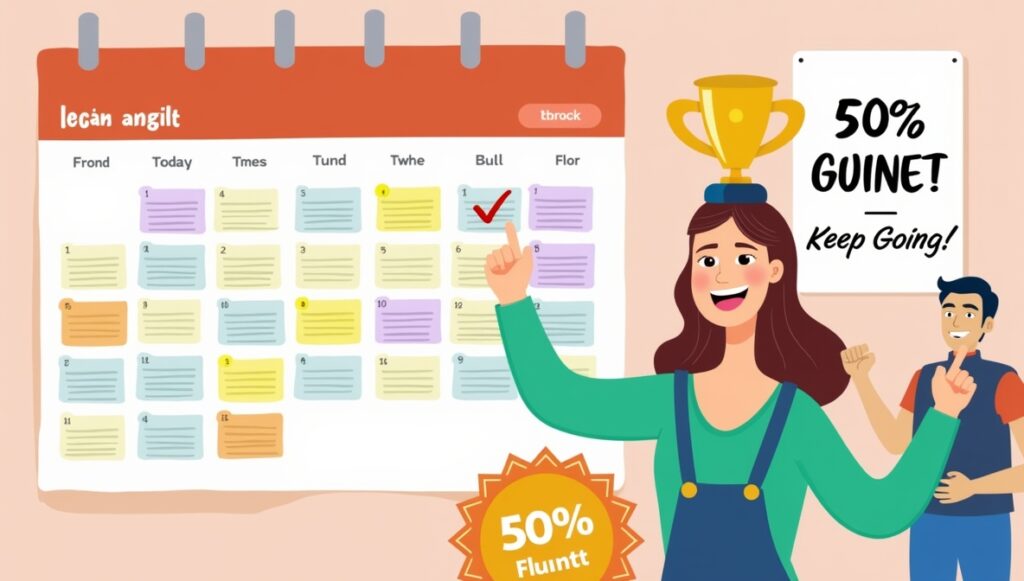
Learning a language is a marathon, not a sprint. Here’s how to stay on track:
- Track Your Progress: Use apps or a notebook to record what you’ve learned. Seeing how far you’ve come can be really motivating.
- Set Small Goals: Break your learning into smaller, achievable goals. For example, “Learn 10 new words this week” or “Have a 5-minute conversation in the language.”
- Reward Yourself: Celebrate when you reach a goal! Treat yourself to something you enjoy.
- Find a Study Buddy or Community: Learning with others can make it more fun and keep you accountable. Join a language group online or find a friend to practice with.
Step 9: Test Yourself and Get Feedback
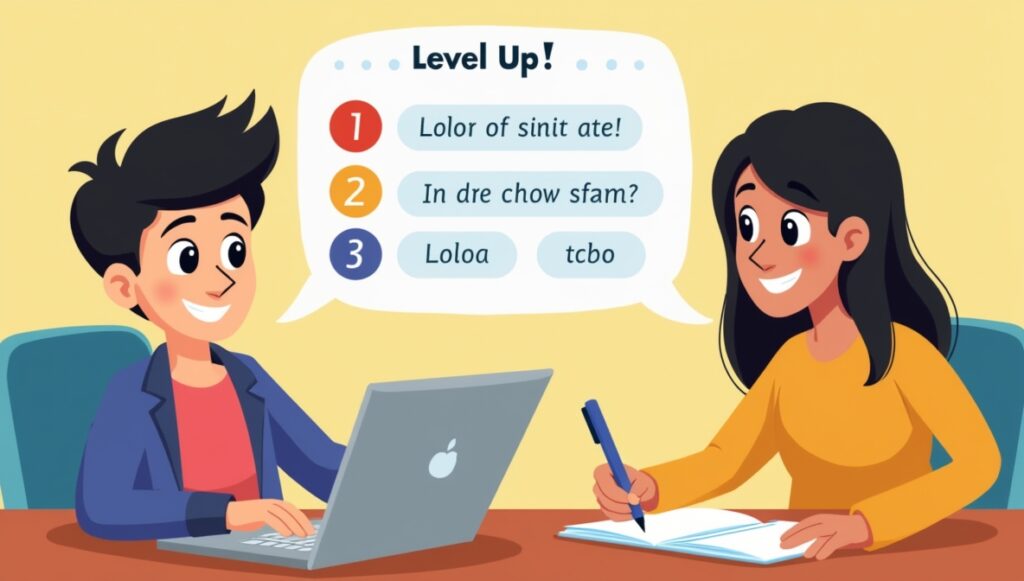
To know if you’re improving, you need to test yourself and get feedback:
- Take Online Tests: There are many free tests online (like CEFR, TOEFL, or DELE) that can help you see your level.
- Ask for Feedback: Talk to native speakers and ask them to correct your mistakes. This helps you improve your pronunciation and grammar.
- Write Regularly: Try writing short essays or journal entries in the language. Have someone correct them to learn from your mistakes.
Step 10: Keep Advancing and Avoid Plateaus

Once you reach an intermediate level, it’s easy to feel stuck. Here’s how to keep improving:
- Challenge Yourself: Read books, watch movies, or listen to podcasts that are a bit above your current level. This pushes you to learn more.
- Think in the Language: Try to stop translating in your head. Instead, think directly in the target language. This helps you become more fluent.
- Have Deeper Conversations: Move beyond simple topics and try discussing more complex ideas. This helps you expand your vocabulary and improve your fluency.
Learning a new language is a journey that requires dedication, practice, and patience. By setting goals, using the right resources, immersing yourself, and practicing daily, you can achieve fluency over time. The key is to stay consistent, enjoy the process, and celebrate small victories along the way.
Start today, and soon you’ll be communicating confidently in a new language!
